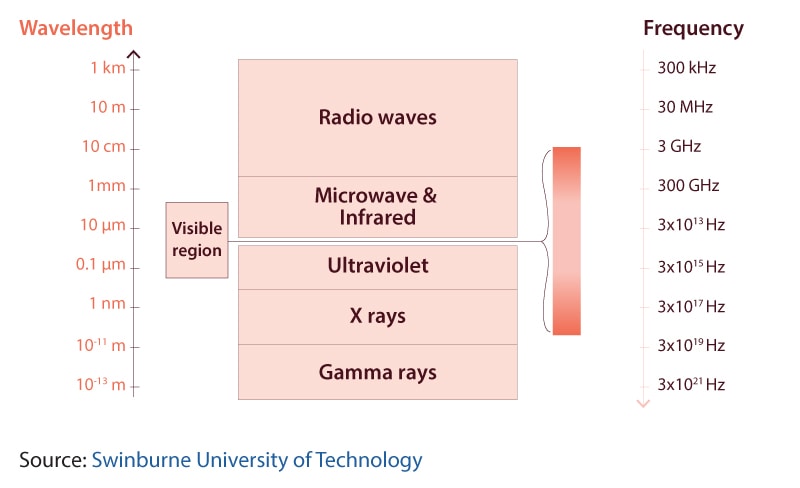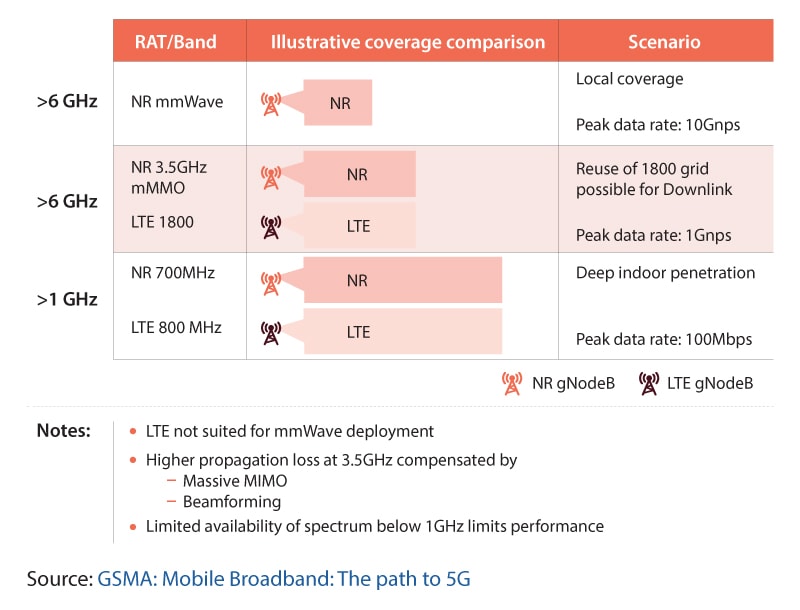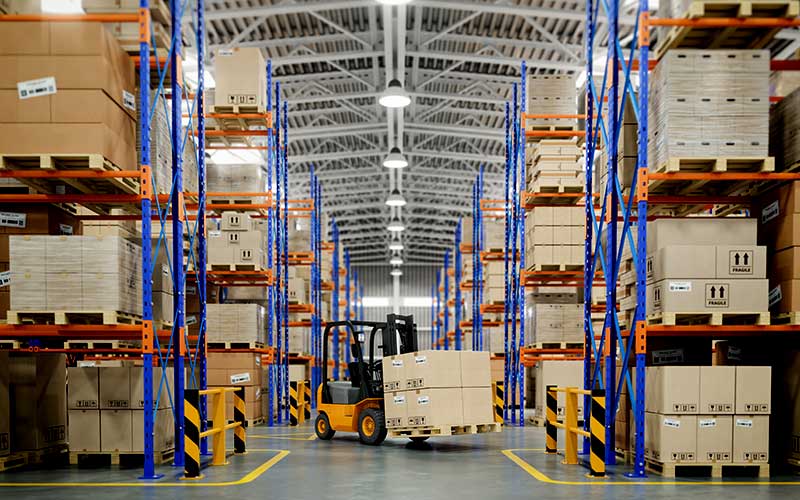Much is said about the new mobile wireless specification 5G. Many tout that the new technology will make possible a number of heretofore unimaginable services and products based on the technology. However, many of the products and services being created are quite vague and lack concrete examples. Therefore, it is important to understand not only which technologies will actually benefit from the new 5G specifications but also how they will benefit, so that companies can allocate resources appropriately and not spend money on wasted efforts. In addition, it is important to note which technologies could proceed using technology available today so that similar resource allocation decisions can be made.
5G Explained
Many publications and opinions seem to broadly paint any new network technology, wireless or otherwise, as 5G. However, 5G (indicating the 5th generation) is a reference put out by the industry association 3GPP to define how devices, specifically those on a wide area network (WAN), will communicate with each other on this new generation of technology.
To understand how our wireless WANs work, it is important to first understand some basic information about wireless signals. All electromagnetic waves fall into what is known as a spectrum. This spectrum is the range of cycles per second, or hertz (Hz), in wave oscillation.
Many readers are no doubt familiar with the terms 2.4GHz and 5GHz, as these are the common bandwidths used for in-home wireless networking, also known as wireless local area networks (WLAN). It is important to note that waves with low frequencies have a very good range and are able to pass through solid matter more easily. The drawback for these waves is that their low frequency also leads to lower data transmission rates
Conversely, higher frequency radio waves have a much shorter range before the atmosphere absorbs too much of the signal. Much higher frequency radio signals can even be blocked by solid matter and require line of sight for a connection. However, with the higher frequency, a much greater rate of data transfer is possible. These are the advantages and drawbacks of the higher frequencies used by 5G.
Figure 1. The relationship between wavelength and frequency

These frequency notes are important because, according to the Global System for Mobile Communication Association (GSMA), one of the key features of the 5G specification is that it will use frequencies in three different ranges 1
The lowest of these bands is the sub-1GHz band, which is expected to use frequencies near 700MHz. These waves will allow for broad coverage and deep building penetration but will have a lower data transmission rate of around 100Mbps. This band is similar to the current sub-1GHz spectrum used in 4G LTE networks.
The middle band to be used is between 1GHz and 6GHz, and is expected to use frequencies near 3.5GHz, which is again similar to sections of the current 4G LTE network with theoretical peak data rates of up to 1Gbps.
The new band in the 5G specification is frequencies above 6GHz. This new band is expected to use frequencies around 30GHz, with a theoretical maximum data transfer rate of 10Gbps.
But because high frequencies have distance and penetration shortfalls, there is a need to create many more nodes, also known as small cells, than are currently in existence for the current 4G infrastructure.
Additionally, 5G hopes to take advantage of a new technology called massive MIMO (multiple-input multiple-output). Massive MIMO aims to increase the number of send/receive antennas on a cell tower by an order of magnitude. The drawback to this technology is that due to the omnidirectional nature of these antennas, there is a much greater risk of signal interference.
To compensate for this signal interference, the 5G specification also calls for utilization of another technology, called beamforming. Beamforming is an antenna technology that creates beams of data to specific users instead of broadcasting in all directions. Beamforming allows for mitigation of the cross-signal interference caused by massive MIMO 2.
Figure 2. How the three bands of 5G (NR) overlap with those of 4G (LTE), according to the GSMA

When referring to 5G technology and its current deployment, it is this specification of bandwidth and node configurations in conjunction with massive MIMO and beamforming that are being referenced. Note that this specification seems to mostly create faster data transmission rates, and that these rates are achieved through clever antenna manipulation and massive amounts of new infrastructure to compensate for the smaller coverage area of nodes in the network. That being said, there are other technologies and protocols that can enhance 5G networks.
5G Technologies
One of these technologies is known as mmWave, or millimeter wave. The major difference between the 4G and 5G networks is the inclusion of a new band of frequencies above 6GHz (typically well above 6GHz). The frequencies of 30GHz to 300GHz have wavelengths of 1mm to 10mm; hence, the name millimeter wave. The main drawback to using such high-frequency waves is that they have an extremely limited range due to things as insubstantial as the air around us being able to interfere with the signal 3.
However, with new technologies like beamforming and mesh networks, these obstacles can, at least, be mitigated if not overcome outright. Since millimeter waves are not unique to 5G, the same data transfer gains can be applied to household and business LAN networks with similar results. The important part to note here is that the data transfer rates can now be faster on a wireless connection than on a copper-wired connection.
The second technology that will augment, but is not unique to, 5G is network slicing. Network slicing is meant to replace the current technology called Quality of Service (QoS). Unlike QoS, network slicing allows for a network provider to not only differentiate among the different types of data on the network but also differentiate who those data are from4.
This is important, as the network function virtualization can be utilized to optimize a portion of a network for a certain type of traffic. Network slicing also allows for a far greater number of connections to a given node. This can be extremely important in places like stadiums and convention centers, where tens of thousands of people congregate in an area.
Are 5G Claims Credible?
Many proponents of 5G tout its theoretical 20Gbps data transfer rate and the target of 1ms latency. There are stories about remote surgeries taking place using a 5G network and claims that 5G will revolutionize augmented reality (AR) and virtual reality (VR) software. There are also claims that 5G will enable autonomous vehicles and that the Internet of Things (IoT) will explode with new devices. But which of these stories holds up to scrutiny?
Robot Surgery
First, take the example of the remote robot surgery. For such a surgery to be successful, there would need to be enough network bandwidth to broadcast a high-resolution video stream from the operating room to the surgeon at a relatively low latency, and a similar situation for instructions from the surgery robot controls to the surgery robot in the operating room. These things can all be achieved with implementations of current technology. Video game companies that host servers for first-person shooter type games often have ping times on the order of 30ms, and high-resolution video streaming is quite commonplace. Is remote surgery an avenue worth pursuing? Given how rare exceptional surgeons are it probably is. However, there is no need to wait for a 5G rollout when today’s network technology will suffice. What is needed is a way to set up direct network links between surgeons and operating rooms, with as few network hops as possible. This is more of a network engineering problem or a mechanics problem if the robot does not respond fast enough. Of course, network slicing could optimize and prioritize this network traffic to help facilitate this endeavor — whether it travels on 5G or physical networks.
AR/VR
Next, consider the idea that 5G will have a great impact on AR and VR. Augmented reality applications already exist, and they typically use location data gathered from GPS satellites augmented with other data downloaded about the local surroundings.
The 5G technology could allow more information to be downloaded, but the current inhibitor to AR is local processing power to display the augmented reality on the device, not the device’s inability to download information about its surroundings fast enough. However, one of the other inhibitors to AR is having many connections in an area (see Pokemon GO circa 2016) and the small cell size of 5G coupled with network slicing will help in this matter immensely.
VR, on the other hand, is a completely different style of technology. One of the current drawbacks to VR is the need to connect to a very powerful graphics processor via a cable. The millimeter wave technology coupled with ultra-reliable low-latency communications could provide enough bandwidth and low latency to eliminate the need for that cable.
Though if VR ever wants to become portable, then the challenges are going to be getting the graphics processor small enough to be housed in the VR headset, reducing the power consumption of the graphics processor enough to be powered for a reasonable amount of time on a battery, and getting a battery pack fitted in the VR headset. Once those challenges are resolved, the VR headset wireless capabilities are trivial.
Autonomous Cars
For the case of autonomous cars, the claims being made are that the wireless networks we have now have too high of a latency to support such vehicles. If these vehicles were trying to coordinate via the current 4G wireless network, this might be true. However, that design would be illogical. Imagine there are two self-driving cars driving along the road, and one car is 100 meters behind the first. Why would we design a system that requires the tailing vehicle to send a request to a tower, have the tower broadcast the request, wait for a response, and then relay the response to the tailing vehicle?
It would be much simpler to formulate a mesh network between the cars to relay information between them. This not only reduces traffic on the tower but also cuts out a middleman and point of failure in the request. Additionally, self-driving cars should be using only these mesh networks for coordination, but reaction to external stimuli should still be accomplished with other sensors. Furthermore, any reaction time an autonomous vehicle has that is less than 500ms is still better than that of most humans.
Internet of Things
Finally, 5G is said to allow the IoT to explode in use. It is unclear how or why this would happen exactly. Many examples are bandied about, like internet connected toasters and refrigerators. More serious suggestions are things like sensors on electrical grids. While these things are certainly possible, they are unlikely. Internet connected refrigerators already exist, but their use seems limited. Toasters and other devices being suggested beg the question, to what end?
Given that each additional internet connected device is an additional security point of attack, why would someone want to expose all of these devices to the internet? Along the same line of thought, why would a utility company want to wirelessly broadcast information about its infrastructure usage when private mesh networking could be used instead with more limited exposure.
Realities of 5G Technology
Verizon has rolled out an implementation of a 5G network in Chicago, and the results are mixed. Tests indicated data transfer rates of up to 630Mbps and ping times of 25ms. This is certainly an improvement of normal 4G operations, which transfer around 320Mbps and have and average latency of 70ms, but it is nowhere near the order of magnitude speed increase or the incredibly tiny ping times laid out in the specification document5.
China Mobile has conducted a remote robotic surgery that was supported by a 5G network, but it is not clear that the 5G network was the last piece that made the surgery possible.
Of course, it is still early days in the deployment of 5G, and improvements will certainly be made. But the reality is that the 5G network is going to be mainly an extension of the 4G network.
The really fast parts of 5G are going to be limited to metropolitan areas, due to the sheer number of nodes required for proper coverage. Unless and until the price of deploying those nodes comes down to pennies, rural areas will never see speeds significantly above what they have on the 4G network.
Conclusions
The 5G specifications are more evolutionary than revolutionary. Yes, there is a revolution in the frequencies of the electromagnetic spectrum that are used, but that revolution is not confined to 5G technology; 5G technology takes advantage of this revolution, but so does WiFi-6.
Indeed, other technologies like network slicing are arguably more revolutionary, and will allow far greater numbers of connections to a network than ever before; but, again, this is not unique to 5G. This is not to say that there are not opportunities to be had, but the 5G specification itself does not seem to be where those opportunities are, unless you are in the business of making high-frequency receivers and transmitters or network switching equipment.
References
- https://www.itu.int/dms_pub/itu-r/oth/0a/0E/R0A0E0000D40001PDFE.pdf
- https://www.digitaltrends.com/mobile/what-is-5g/
- https://searchnetworking.techtarget.com/definition/millimeter-wave-MM-wave
- https://www.computerworld.com/article/3231244/what-is-the-difference-between-network-slicing-and-quality-of-service.html
- https://www.cnet.com/news/testing-verizons-early-5g-speeds-was-a-mess-but-im-still-excited-about-our-data-future/





